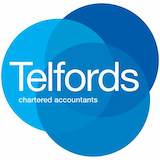
Speaking Basics
How giving a speech in another language reminded me of most important elements of public speaking
By Teresa Palmer, Toastmasters International
As a regular public speaker I decided to give myself the challenge of giving a speech in another language. Having been a member of Toastmasters for many years my first step was to join the Experience French Toastmasters Club. I was excited and eager to present my first speech.
Over the years I had given hundreds of speeches, but this would be my first in another language. I was well-prepared, checking my pronunciation and grammar. Memorization is not something I am good with, nor do I consider it helpful in giving a speech. However, since I was presenting this in French, and not my native English, I thought to try it. Spoiler alert; it was not a good idea, and it added to my anxiety. My speech started well, but within a minute or so, I could sense my audience was struggling to stay engaged. Very soon I had completely, and irreversibly, lost my connection to the audience. What happened and why?
Complexity
My speech was too complex to give in a language that I did not have full command of. My French was simply not good enough, and therefore I was unable to resonate with it in French. This left my speech void of any emotion because I was thinking in English and translating to French. My speech was a well-choreographed collection of words. It looked good on paper but was missing substance. I was Google Translate! I had talked for five minutes, yet, said very little and more importantly my speech had no resonance with my audience. They were as happy to see me end my speech as I was to end it.
Emotion
Although it is beneficial to present a speech in another language to build confidence, it is important to present a topic that lends itself to the speaker fully understanding and being able to resonate with what is being said. That allows the speaker to be emotionally invested in the speech and able to change course if the audience is not engaging, for example, by using techniques such as adding humor or a personal story to pique the audience’s interest. I was unable to do that as I was not spontaneous in my thinking in French.
The opportunity to present a speech in a second language was the catalyst to remind me of the essential speaking elements that Toastmasters has taught me over the years: People do not remember you by what you say, they remember you by how you make them feel. My audience felt nothing because I was feeling nothing and therefore failing to deliver any emotion.
There are basic essential elements of engagement for effective public speaking and when these elements are present, a speech in any language whether in person or online becomes a memorable, engaging speech that leaves the audience wanting more.
What the audience sees
Visibility is the initial impression you give to the audience and this first impression is crucial for audience engagement. For example, are you dressed appropriately? Do you look poised and confident?
When a speech is given in person stand in a spot where you are visible to the entire audience. Online, make sure you are centered in the middle of the computer screen with adequate lighting and a background that is not a distraction. That way your facial expressions and hand gestures will be seen clearly.
Eye contact is important. In my experience it is difficult to maintain eye contact while using notes. I am not suggesting that notes never be used. But, if it is necessary, be sure to maintain eye contact with an audience. Never read your speech.
What the audience hears
Just as essential as visibility is what the audience hears. You should encourage active listening by keeping the audience engaged. How do you do this?
- The quality of your voice – is your voice loud and clear? If you are presenting a speech in person, check that everyone in the audience can hear you. If not, then a microphone is needed. For online presentations, be sure to use a headset or ear buds and make sure your audio is without feedback or other distractions.
- The pace or cadence of speaking. Is your speech too rapid? If so it will be difficult for the audience to comprehend what’s being said (as the brain takes a moment to catch up) and the audience therefore ‘tunes out.’ On the other hand, a very slow cadence can put an audience to sleep as they tire of waiting for what the speaker has to say.
- Vocal variety. Pace or cadence is the rhythm of speaking and acts in conjunction with vocal variety. For example, speeding up to denote excitement, or slowing down to hammer home a point. Vocal variety is also the change in pitch and tone of voice. Think of it as being on a roller coaster with the twists, turns, highs and lows. The climax builds as the roller coaster ascends and then plunges downward. Giving a speech is similar as the speaker engages the audience on a ride to reach an exciting climax.
- Pausing. A pause is not an interruption; it’s a moment to take a breath – for you and the audience. It’s a moment to digest what has been said or to appreciate a joke. The pause is a powerful and essential element that is often overlooked.
What the audience feels
In preparing and presenting a speech how do you want the audience to feel? A speech is not about the speaker, it is about the audience. It needs a clear (and relevant) message delivered in a way that keeps the audience engaged. Ultimately, it is about audience satisfaction.
Knowing you can give a speech or presentation in another language is a great confidence booster. However, my first speech in French was an important reminder that this wasn’t all about me. It was all about the basic elements of public speaking.
ABOUT THE AUTHOR
Teresa Palmer is a member of Toastmasters International, a not-for-profit organisation that has provided communication and leadership skills since 1924 through a worldwide network of clubs. There are more than 400 clubs and 10,000 members in the UK and Ireland. Members follow a structured educational programme to gain skills and confidence in public and impromptu speaking, chairing meetings and time management. To find your nearest club, visit www.toastmasters.org




